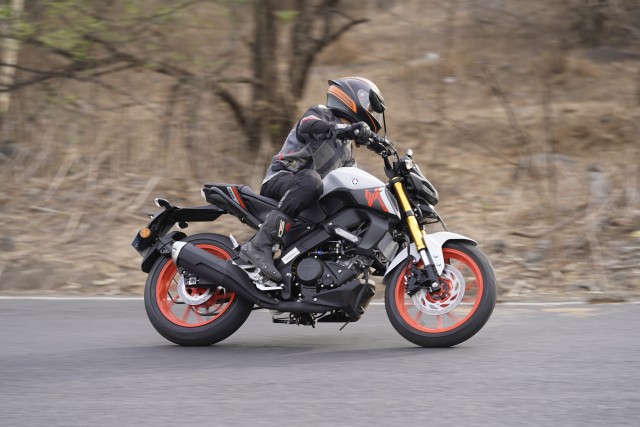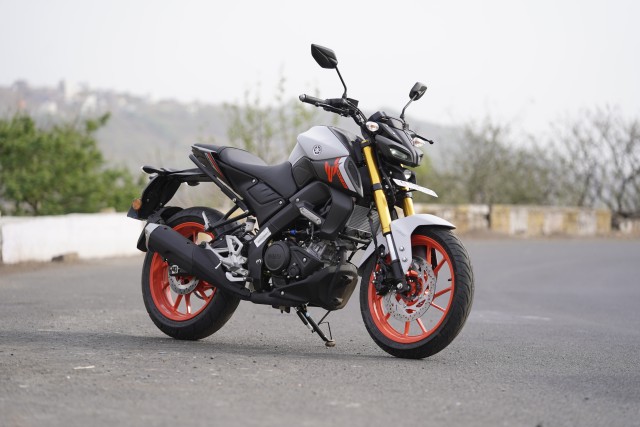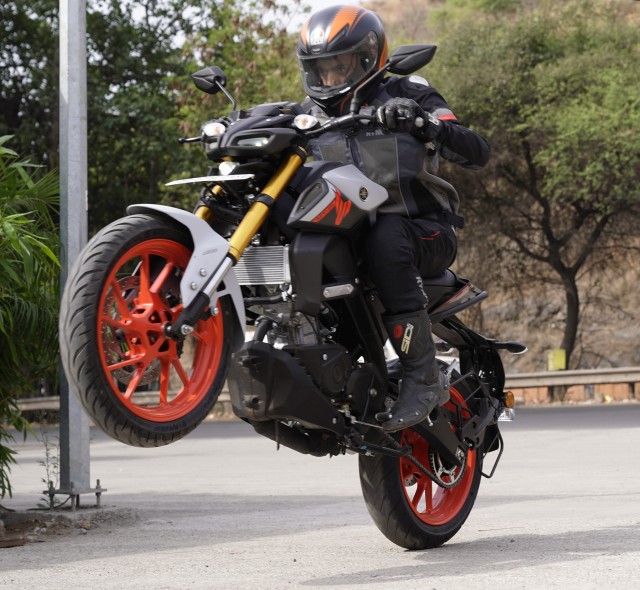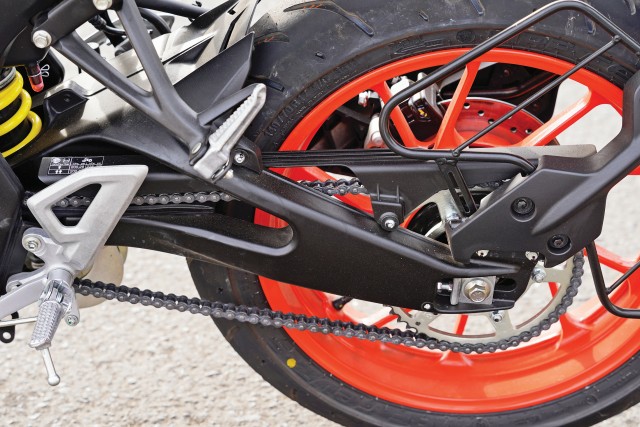We spent a day with the Yamaha MT-15 Version 2.0 to bring you a detailed report on the updates that the motorcycle has received.

Story: Azaman Chothia
Photography: Snajay Raikar
The Yamaha MT-15 was launched in India in March 2019. It has been a fairly popular model since then, but there was always room for improvement. Last month, Yamaha introduced an updated model, called the MT-15 Version 2.0, that sports some noteworthy upgrades for 2022. Let us take a look at how these upgrades have enhanced the naked sibling of the reputed R15.

The design of the motorcycle remains pretty much the same. Back when the first model was launched, the bike was being offered with telescopic front forks and a box-section swing-arm to keep costs in check. Yamaha have addressed this issue and Version 2.0 now sports chunky golden upside-down (USD) front forks and the cast-aluminium swing-arm that we see on the R15. New colour options are available now with updated graphics that increase the bike’s overall appeal. The test bike seen here sports the Ice Fluo Vermillion colour scheme that I find really lively, especially because of those red alloy wheels that make it stand out. In my opinion, the only thing that does not go well with the rest of the sharp and sleek design of the MT-15 are the dated indicator units. Nevertheless, sleeker indicators are available as part of the accessories at extra cost.

The ergonomics are such as you would expect of a naked streetfighter. The bike places the rider upright and his/her legs in a slightly aggressive position on the sporty rear-set foot-pegs. Overall, this is a really compact motorcycle and those short in stature will easily be able to access the ground thanks to a seat height of 810 millimetres. The handlebars are closer to the rider because of the tiny 10-litre fuel tank, which allows one to cover longer distances without breaking their back. The only discomfort I faced was while riding on a zigzag section. While getting ready to attack a set of corners, I tend to move to the rear of the seat and place my toes on the pegs. However, I was not able to place my legs in an aggressive manner because of the compact nature of the bike and the rear of my riding boots would always hit the pillion foot-rests.

The 155-cc, liquid-cooled, single cylinder motor develops 18.4 hp at 10,000 rpm and a peak torque of 14.1 Nm at 7,500 rpm and is mated to a six-speed gearbox. Compared to the previous model, this one makes 0.1 hp less and the torque has gone up by 0.2 Nm. What I appreciated as soon as I got astride the bike was the level of engine refinement. The power delivery is linear and you can feel it get into its element at around 6,000 rpm. A few vibrations are felt once the bike is being revved above 8,500 rpm, but it was not something that bothered me too much. The VVA (Variable Valve Actuation) system provides torque assist for better ride-ability throughout the rev-range. There are two intake valve cams: one for low to mid-range rpm and another for the high-end rpm range. They switch between each other at the 7,400-rpm mark and the negative LCD dash now highlights a part of the tachometer when the second intake valve cam has been opened. Even though this engine has been built keeping the sporty nature of the motorcycle in mind, it is surprisingly tractable. I was able to cruise at low speeds of around 35 km/h in the city in sixth gear with no misbehaviour from the engine. When trying to get through a lot of traffic, I needed to stay in the lower gears. For swift overtakes, all that is needed is a quick downshift in the slick six-speed gearbox.

As we all know, the MT-15 makes use of the Deltabox frame from the R15 which gives the bike its superb rigidity and balance. With the new USD front forks, the bike is now even more confidence-inspiring to ride. I got great feedback from the front end while attacking corners and flicking the motorcycle from one side to another. It held the line perfectly and allowed me to lean further and get on the throttle earlier with every passing turn. And, yes, the cast-aluminium swing-arm combined with the rear shock also plays an important role in how stable the bike feels through a set of corners. This bike has a kerb weight of 139 kilograms which makes it really nimble to handle and this just adds to the fun quotient. The suspension set-up is on the stiffer side, but it managed to soak in all the undulations on our unpredictable roads.

While many are upset about this new model being devoid of dual-channel ABS, it was good fun locking up the rear to get sliding. The front brake has good bite and is ample to get the MT-15 to a complete stop when necessary. But if you look at the price, it would have been nice to have a variant with the dual-channel ABS option, considering the safety of newer riders. The bike also misses out on the quickshifter and the traction-control system that was recently introduced on the R15 V4, although these are not really things that are necessary on an 18.4-hp machine.
In terms of features, the bike is now equipped with the Y-Connect Bluetooth connectivity feature from Yamaha. This displays SMS/e-mail, missed/incoming calls, and phone battery level alerts on the negative LCD dash. It will be nice to see turn-by-turn navigation also integrated into this as an additional feature in the future.

The Yamaha MT-15 Version 2.0 is priced between Rs 1.60 lakh and Rs 1.61 lakh (ex-showroom), depending on the colour option, thus making it around Rs 13,000 more expensive than its predecessor. It has surely evolved into a more exciting motorcycle especially because of how it tackles a set of corners with those sporty R15-derived upgrades. For new riders wanting to begin their journey into the world of biking with a Yamaha motorcycle, this is where you should probably start. It is a more practical motorcycle than the R15 in the city and on the highway as well. This has a lot to do with the comfort that it offers and how effortless it is to ride around town. Another plus point of picking the MT-15 is that you will be saving around Rs 20,000 compared to the top-end variant of the R15 V4. Maybe, in the near future, we hope to see Yamaha bring the MT-03 to India so it can take on the heavy competition in the sub-400-cc category.


Leave a Reply